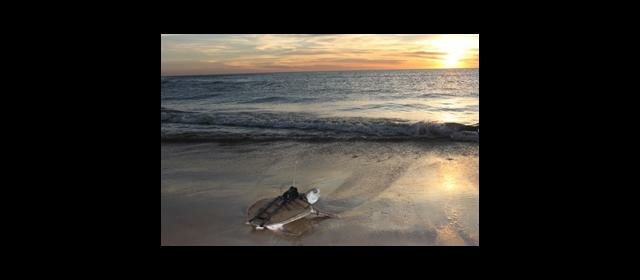Research to net threats to Territory turtles
Caption: This juvenile Olive ridley will assist CDU researchers with protecting Australasian sea turtle pop
By Leanne Coleman
Courtesy of CDU enews
Two juvenile turtles released back into the wild will assist Charles Darwin University marine researchers to contribute towards conservation efforts to protect threatened turtle species.
The two-year-old turtles, reared by the Territory Wildlife Park after being rescued as hatchlings, were fitted with satellite transmitters and released at Bare Sand Island over the weekend.
CDU marine biodiversity Research Fellow working with the North Australia Marine Research Alliance Dr Kiki Dethmers said this would be the first time juvenile Olive ridley and Flatback turtles would be monitored
simultaneously.
“We don’t know much about the juvenile turtles living in northern Australian waters,” Dr Dethmers said. “Tracking two different species will give us valuable information about how the species interact and if their
migration and feeding routes overlap.”
Dr Dethmers said that a major threat to north Australian turtle populations was discarded fishing nets, commonly known as ghost nets. Focusing on the Arafura and Timor Seas, she is working with a large network of collaborators to assess the impact of ghost nets on turtle populations in this region.
“Other than identifying their migratory pathways, satellite telemetry also helps to identify where particular individual turtles like to spend most of their time looking for food,” she said.
“Using the information of the migratory patterns together with information about where nets drift could help predict potential hotspot areas for ghost net-turtle interaction.”
This is not the first time a rescued turtle has been monitored. The CDU team was able to track a large Flatback turtle for 106 days in 2012, which confirmed some predictions about where the species was moving to feed.
“The waters around the Vernon Islands appear to be an important feeding ground for the Flatbacks, she said. “A large net was also recently reported in that area.
“The transmitters will provide valuable data for conservation and management efforts aimed at reducing detrimental impacts on Australasian sea turtle populations.”
Dr Dethmers said that while a lot of good work was being done by Indigenous sea rangers to clear debris from beaches that were vital nesting sites for turtles, more information was needed. “We need to find out more about where the nets enter the system and how they move through North Australian waters before they washed up on shores.
“Olive ridleys are listed as endangered under the Environment Protection and Biodiversity Conservation Act and Flatback turtles are endemic to Australia so it is our responsibility to look after them.”
Members of the public can follow the rehabilitated turtle’s progress by visiting the link: http://www.seaturtle.org/tracking/?project_id=802& dyn=1354801813
- See also publication in THE AUSTRALIAN, on June 11, 2013: Transmitters put turtles back on track
- For more images please visit CDU 'RIEL life' facebook page.
Current projects
External link:
Research to net threats to Territory turtles









